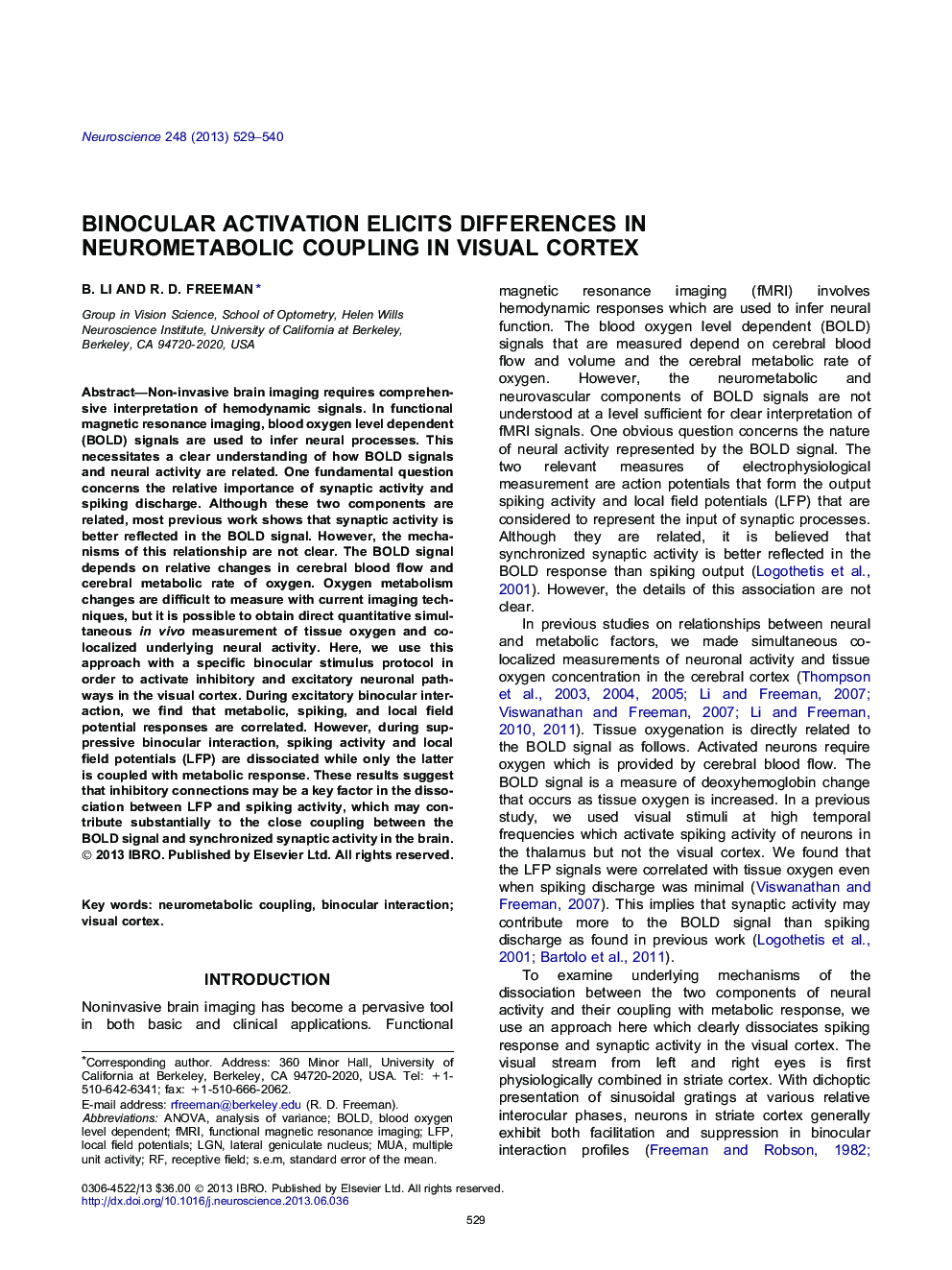| Article ID | Journal | Published Year | Pages | File Type |
|---|---|---|---|---|
| 6274711 | Neuroscience | 2013 | 12 Pages |
Abstract
Non-invasive brain imaging requires comprehensive interpretation of hemodynamic signals. In functional magnetic resonance imaging, blood oxygen level dependent (BOLD) signals are used to infer neural processes. This necessitates a clear understanding of how BOLD signals and neural activity are related. One fundamental question concerns the relative importance of synaptic activity and spiking discharge. Although these two components are related, most previous work shows that synaptic activity is better reflected in the BOLD signal. However, the mechanisms of this relationship are not clear. The BOLD signal depends on relative changes in cerebral blood flow and cerebral metabolic rate of oxygen. Oxygen metabolism changes are difficult to measure with current imaging techniques, but it is possible to obtain direct quantitative simultaneous in vivo measurement of tissue oxygen and co-localized underlying neural activity. Here, we use this approach with a specific binocular stimulus protocol in order to activate inhibitory and excitatory neuronal pathways in the visual cortex. During excitatory binocular interaction, we find that metabolic, spiking, and local field potential responses are correlated. However, during suppressive binocular interaction, spiking activity and local field potentials (LFP) are dissociated while only the latter is coupled with metabolic response. These results suggest that inhibitory connections may be a key factor in the dissociation between LFP and spiking activity, which may contribute substantially to the close coupling between the BOLD signal and synchronized synaptic activity in the brain.
Keywords
Related Topics
Life Sciences
Neuroscience
Neuroscience (General)
Authors
B. Li, R.D. Freeman,
